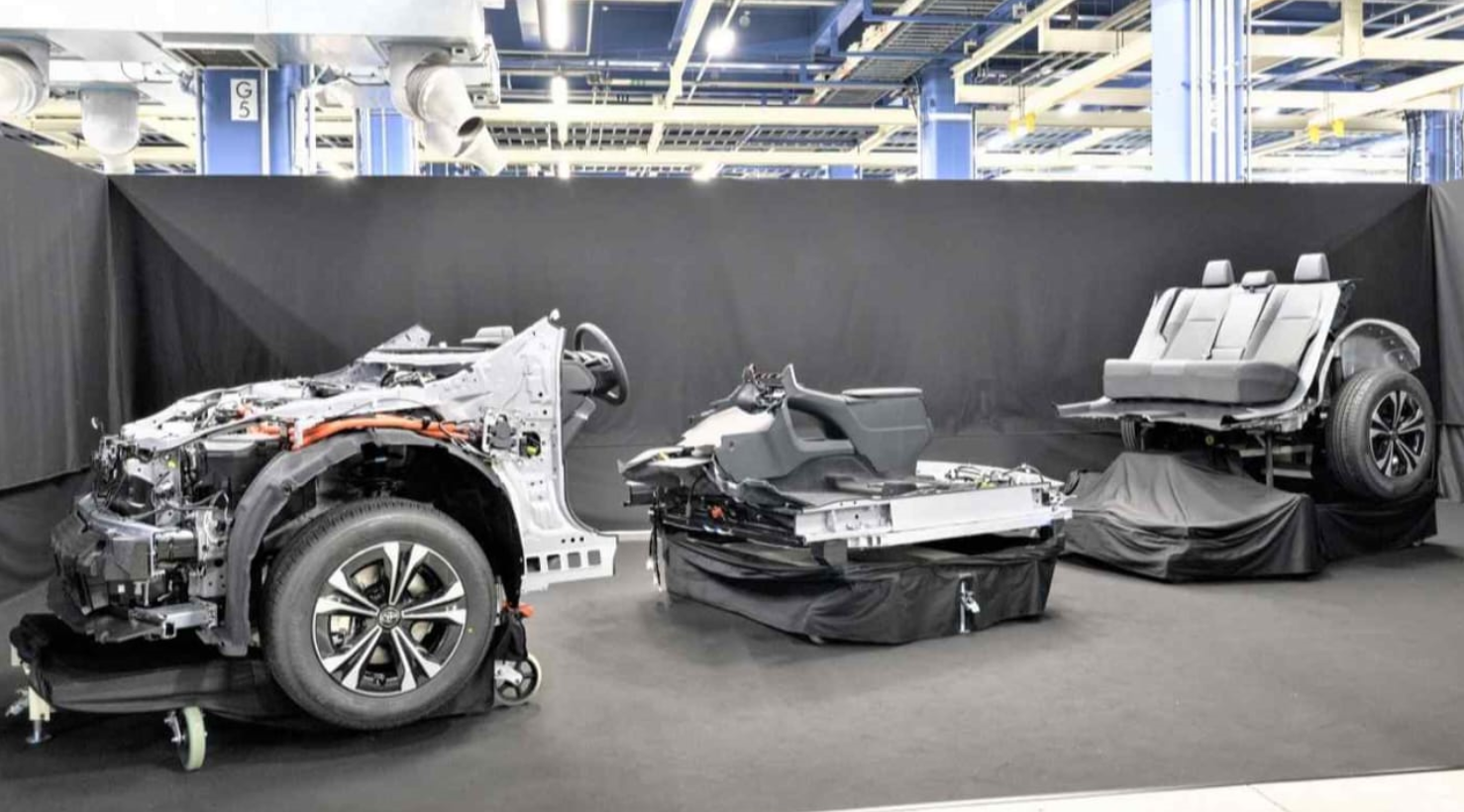
New Delhi: Toyota Motor has unveiled a prototype of its gigacasting equipment, a technology poised to revolutionize electric vehicle (EV) manufacturing. This advanced machinery can create one-third of a car body in just three minutes. Toyota aims to streamline its EV production, reduce plant investment, and minimize manufacturing preparation lead times, all in pursuit of its goal to sell 3.5 million EVs annually by 2030.
Situated at Toyota’s Myochi plant in Japan, the gigacasting machine demonstrated its capabilities by efficiently moulding molten aluminium. This process converts aluminium from 700°C to 250°C, forming a seamless die-cast piece that constitutes the entire rear third of a vehicle chassis. This achievement replaces a complex 33-step, hours-long process requiring 86 separate parts.
Toyota’s overarching objective is to halve production processes, cut costs, and accelerate production readiness. Gigacasting technology will also extend to the front and rear sections of a new electric model set for release in 2026, reaffirming Toyota’s commitment to innovation and efficiency.
Toyota’s journey into gigacasting began in September 2022 with the construction of its first prototype. Initial mould swapping took a full day but has since been reduced to 20 minutes by simplifying part detachment. Toyota aims for a 20% higher productivity rate than competitors, aided by proprietary software optimizing molding conditions.
In addition to gigacasting, Toyota adopts a “self-propelled production” strategy for factory space efficiency. At the Motomachi plant, a partially assembled vehicle autonomously navigates towards a robot arm, which attaches seats delivered by an automated guided vehicle. This setup eliminates conveyor belts, allowing flexible plant layout changes and a 50% reduction in assembly time.
High battery costs have historically challenged EV profitability through conventional manufacturing methods. Tesla, an early adopter of gigacasting, maintained competitiveness by producing limited models in large quantities.
With its extensive automotive technology heritage and diverse model portfolio, Toyota stands out in the EV market. Chief Production Officer Kazuaki Shingo acknowledged this, saying, “We’re learning from specialized EV makers to take on the challenge.”
Toyota aims to sell 1.5 million EVs by 2026, a significant increase from approximately 24,000 sold in 2022. CEO Takaki Nakanishi of the Nakanishi Research Institute predicts that around 40% of these vehicles will use the existing Toyota New Global Architecture platform, while the rest will rely on a dedicated EV platform.
To maintain profitability in the EV era, Toyota plans to employ its new frames in about 1.7 million of the 3.5 million EVs it aims to sell by 2030.
In the competitive EV landscape, where Tesla delivered approximately 1.31 million EVs in 2022, Toyota prepares to challenge the status quo with the ground-breaking technology and a rich automotive heritage.









